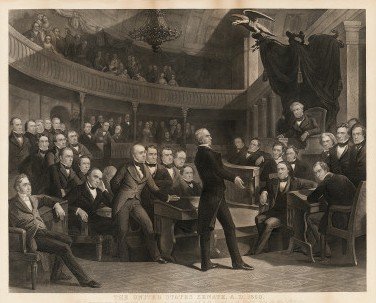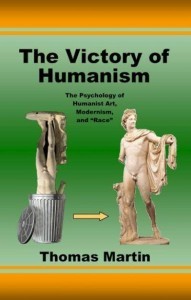Western Culture
Research on Pornography and the Sexualization of Culture
/221 Comments/in Evolutionary Psychology, Featured Articles, Western Culture/by Kevin MacDonaldLasha Darkmoon’s current TOO article provides case studies illustrating the sexual deviance of some of the main promoters of pornography. The question here is whether the availability of pornography is bad for Whites or, indeed, for any group.
Historically, explicit sexuality was a taboo in all Western societies. Growing up Catholic in the 1950s, one was aware that sexually explicit material was far underground and that it was eminently disreputable. Implicitly and perhaps explicitly in some circles, pornography was seen as incompatible with the social utility of creating social supports for marriage based on love and affection between partners; marriage thus conceived encourages fertility and provides an ideal environment for children.
Implicitly at least, there was a recognition that sex is a strong biological urge, an attitude that no evolutionary psychologist would question. The basic findings of research on pornography fit well with the evolutionary theory of sex: males are naturally more attracted to pornography than females because males benefit from relatively indiscriminate mating, multiple mates, and depersonalized and even coercive sexual encounters.
Females, on the other hand, are expected to place a greater value on relationships of intimacy and love as signals of male investment in them and their children. Females generally suffer huge costs from indiscriminate mating and from sexual coercion (no paternal investment; bad genes). Because of the demands of pregnancy and lactation, they do not benefit from multiple mates with the result that polyandry is vanishingly rare in human societies. Read more
Snow White and the Huntsman
/139 Comments/in Featured Articles, Western Culture/by Kevin MacDonaldSnow White and the Huntsman
Directed by Rupert Sanders
Produced by Sam Mercer, Palak Patel, Joe Roth
Screenplay by Evan Daugherty
I realize that if a studio is going to spend $170 million on a movie, they are going to do their best to appeal to a wide audience. Movies with mass appeal necessarily have emotional hooks that draw the audience in. In Snow White, there are two such hooks. Read more
The Southern Point: Rhetorically Speaking
/259 Comments/in Featured Articles, Western Culture, White Racial Consciousness and Advocacy/by Sir TristramA world is supported by four things…the learning
of the wise, the justice of the great, the prayers of
the righteous and the valor of the brave. But all of
these are as nothing…without a ruler who knows the
art of ruling. Make that the science of your tradition!
-Frank Herbert, Dune
The Old South was far ahead of the New World Order. What it lacked in technological development, it made up for in a concrete understanding of human nature that was grounded in reality. That reality was firmly rooted in two principles based upon experiential observation: the existence of ineradicable distinctions between different races and the danger of concentrating power in one unitary source that could arbitrarily determine the outcome of local domestic issues from afar. Indeed it may be stated unequivocally, that American civilization cannot truly go forward at all if its interpretation of human relationships and psychology deniesthese two points. It is for this reason that the philosophic fountainhead of resistance to the New World Order in the United States must inevitably begin with an endorsement of Southern rhetoric.
The term “rhetoric” has come to mean one of two things in contemporary culture: artificial speech or dishonest propaganda. This is a sorry state of affairs. It represents, in part, the overwhelming distortion that a purely nominal and positivistic machine age has introduced into human discourse. The ancients had a much more elevated conception of the term, viewing it as a necessary analogue to the process of dialectic. Rhetoric was the high art of persuasion and the power of a particular style. Elsewhere I have addressed the polarization between the scientific and poetic modes of discourse and the need for redressing a balance between the two. The original ideal concept of rhetoric represents another evolutionary component of the poetic mode, a category that I previously dubbed the Bardic Dynamic. Read more
Review of Thomas Martin’s “The Victory of Humanism”
/126 Comments/in Arts and Clture and Politics, Western Culture/by Kevin MacDonaldThe Victory of Humanism: The Psychology of Humanist Art, Modernism, and “Race”
Thomas Martin
Palm Coast, FL: Backintyme, 2011; 177 pages
There can be little doubt that in historical perspective, perhaps the most important upheaval in Western culture has been the decline of aristocratic culture. This is apparent, for example, in two recent books that have influenced my thinking, Ricardo Duchesne’s The Uniqueness of Western Civilization and Andrew Fraser’s The WASP Question (my review will appear in the first issue (June) of Radix, a new magazine edited by Alex Kurtagic and Richard Spencer). For Duchesne, aristocratic individualism is the key to understanding the uniqueness and creativity of the West. Fraser laments the decline of Indo-European aristocratic culture, beginning with the Puritan revolution of the 17th century and carried to its logical conclusion in America with the defeat of the South in the Civil War.
Thomas Martin’s The Victory of Humanism focuses on the decline of aristocratic culture in Western art. Following the “perfection of antiquity,” the breakthrough occurred in the Renaissance with the work of Leonardo Da Vinci, Raphael, and Michalangelo.
A critical observation by Vasari is that those artists achieved perfection by only portraying the beautiful. They did this by using the most beautiful examples of the human body or nature. In this way, they achieved the idealization or perfection of both body and nature. In fact, Vasari goes so far as to say that Michelangelo was so wedded to the idea of perfection that he had a policy of never doing a portrait of a living person.This would have been descending away form the ideal in the “mind of God” or the human mind, and losing himself in the particular of the empirical.
Martin correctly points out that this sense of ideal human form is an innate part of human psychology. Evolutionary psychologists have shown that the faces that humans find attractive are generalized. That is, faces that are produced by averaging dozens of real photos are judged attractive. Martin expands on this by suggesting that “there is a certain nobility in the generalized face, which helps create the sense that it is ideal. Seeing the face that is in the mind takes the viewer above or out of this world and into the mind, the most powerful and noble part of our bodies.” Read more
Evil Genius: Constructing Wagner as Moral Pariah, Part 2
/33 Comments/in Anti-Jewish Writing, Anti-Semitism, Featured Articles, Western Culture/by Brenton Sanderson
Part 2: Jewish Responses to Wagner’s Ideas
Basically ignoring whether Wagner’s views on Jewish influence on German art and culture had any validity, a long line of Jewish music writers and intellectuals have furiously attacked the composer for having expressed them. In his essay “Know Thyself” Wagner writes of the fierce backlash that followed his drawing “notice to the Jews’ inaptitude for taking a productive share in our Art,” which was “met by the utmost indignation of Jews and Germans alike; it became quite dangerous to breathe the word ‘Jew’ with a doubtful accent.” Wagner’s critique of Jewish influence on German art and culture could not be dismissed as the ravings of an unintelligent and ignorant fool. Richard Wagner was, by common consent, one of the most brilliant human beings to have ever lived, and his views on the Jewish Question were cogent and rational. Accordingly, Jewish critics soon settled on the response of ascribing psychiatric disorders to Wagner, and this has been a stock approach ever since. As early as 1872 the German Jewish psychiatrist Theodor Puschmann, offered a psychological assessment of Wagner which was widely reported in the German press. He claimed that Wagner was suffering from “chronic megalomania, paranoia… and moral derangement.”
The long-time music critic for the New York Times, Harold Schonberg (who was a Jew), described Wagner in his Lives of the Great Composers (1997) as “amoral, hedonistic, selfish, virulently racist, arrogant, filled with gospels of the superman … and the superiority of the German race, he stands for all that is unpleasant in human character.” In 1968 the Jewish writer Robert Gutman published a biography of Wagner (Richard Wagner: the Man, his Mind and his Music) in which he portrayed his subject as a racist, psychopathic, proto-Nazi monster. Gutman’s scholarship was questioned at the time, but this did not prevent his book from becoming a best-seller, and as one source notes: “An entire generation of students has been encouraged to accept Gutman’s caricature of Richard Wagner. Even intelligent people, who have either never read Wagner’s writings or tried to penetrate them and failed … have read Gutman’s book and accepted his opinions as facts.” Read more
Evil Genius: Constructing Wagner as Moral Pariah, Part 1
/79 Comments/in Anti-Jewish Writing, Anti-Semitism, Featured Articles, Western Culture/by Brenton SandersonPART 1
In the 2010 feature-length documentary Wagner and Me the British celebrity Stephen Fry explored his love affair with the music of Richard Wagner. Fry, who is Jewish, homosexual, and bipolar, enjoys a multi-pronged “victim” status that has made his identity politics credentials the aesthetic equivalent of a nuclear warhead. The inevitable consequence of this (and his Leftist politics) is his constant presence in the British media. Indeed, Stephen Fry is possibly the most overrated and overexposed individual in the history of British entertainment, and has benefited enormously from the intellectual elite’s construction of Jewish genius to the point where he is routinely hailed in sections of this fawning media as a “genius” and a “national treasure.”
As well as providing another celebrity vehicle for the overrated Stephen Fry, Wagner and Me offered another platform for exploring the life, work and thinking of one of the world’s most famous “anti-Semites.” While acknowledging Wagner’s undoubted genius, Fry reminds us in portentous tones that “a shadow falls across the sublime music. It’s not only the fact that it was later appropriated by Hitler which makes some people think of Wagner’s art as tainted. It’s also because Wagner himself was outspokenly anti-Semitic.” Read more









